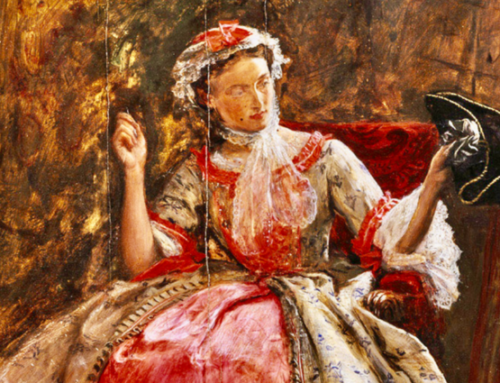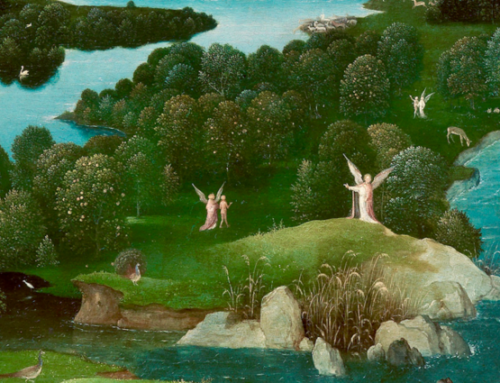The Purloined Boy, by Mortimus Clay
Several books into the Harry Potter series, Joseph Bottum wrote that J. K. Rowling’s genius was her ability to mush together elements in themselves of little worth: “A writer who puts one cliché into a book manages to produce pulp fiction. A writer who uses a dozen can produce a classic. And a writer who includes them al—well, only Homer has ever managed that.”
The idea was that Rowling is a fairly talented writer, courageous enough to stand back and let the “most standard, hackneyed old tropes and figures. . . perform their magic.” There was something to Bottom’s assessment, of course. But by the end of the Potter books readers discovered that what drove them was some fairly serious ideas about the nature of evil, the virtuous life, and the truest, deepest magic—common to Hogwarts and our world: sacrificial love.The Purloined Boy, written by “Mortimus Clay,” certainly has the clichés necessary for a bildungsroman fantasy classic: magical creatures and magical gadgets, a back story shrouded in myth, deus ex machina-escapes, and budding romance. But for these tropes to work they must be embedded in an engaging plot, which, without saying every plot point rings perfectly true, The Purloined Boy possesses.
Trevor Upjohn, a boy in a prison school run by bogeymen in their gray industrial nightmare town of Superbia, has dreams of a home and parents and being kidnapped by a bogeyman. The bogeys and the humans who work for them strive to convince the children that home and parents are mythical concepts, but Trevor believes his dreams are memories. His insistence on this fact provokes the assistance of human and magical allies who help him to escape the fate of becoming bogey food and lead him to a mysterious society known as the Guild. The Guild is dedicated to rescuing children and pushing back the dark power of the bogeys and their mysterious human lord, Lucian. The first book in what the author calls “The Weirdling Cycle” does an admirable job of introducing characters and back story through the excitement of Trevor’s discovery of the menacing truth about the world he escapes and the struggle between Guild and bogeys. As you might guess, Trevor finds he is a very important player in this fight—he may be the subject of prophecy.
As with the Potter books, however, what makes this plot with its “hackneyed tropes” so powerful is the thematic content. Looking at the reviews available online (many linked to the author’s website), one might think that this is another “tween” fantasy. But none of the reviewers has discerned the intellectual framework that should be evident to anyone who reads the mock puffery on the back of the book by “Charles Dickens in The Dead Author’s Review“: Splendid! Plato meets Poe! Mortimus has outdone himself.”
The joke is that “Mortimus Clay” was a Dickens-envying professor at “Her Majesty’s Knitting College for Wayward Girls” whose 1885 death resulted in his writing taking an immediate turn for the better.” The serious part is that this tale does show signs of both Poe and Plato. Poe’s presence is obvious in the darkness and sense of dread that characterizes much of this book. Trevor’s escape from Superbia into the happiness of the Guild is short-lived; by volume’s end the Guild is on the run, a main sympathetic character is dead, and the dark is rising. But it is a Christianized Plato who supplies the method behind the magic.
 At the beginning of the book Trevor, like the souls in Plato’s cave, dwells in darkness—the sun is not visible in Superbia (the city’s name being the Latin word for the chief sin, pride). But like a good Platonic soul, he remembers his own “pre-existence” in a better reality, a family with a home and the sun shining. Plato posited that the denizens of the cave would need help in escaping the cave and entering the world of reality. Christian Platonists said that help had come in the form of Jesus Christ and his Body, the Church. While no Christ figure is evident, Trevor’s escape from Superbia is aided by a mysterious mouse, the secret help of the Guild, whose qualities resemble those of the Holy Spirit. The mouse enables superhuman action but demands effort on the parts of those he helps. Further Christian images abound; for example, Trevor’s deliverance features a harrowing plunge into water, members of the Guild who rescue children are known as “fishers,” and the final initiation of the Guild is a feast in which everyone eats the fruit of a tree whose power both keeps the Guild safe and gives a temporary real communion of heart and mind.
At the beginning of the book Trevor, like the souls in Plato’s cave, dwells in darkness—the sun is not visible in Superbia (the city’s name being the Latin word for the chief sin, pride). But like a good Platonic soul, he remembers his own “pre-existence” in a better reality, a family with a home and the sun shining. Plato posited that the denizens of the cave would need help in escaping the cave and entering the world of reality. Christian Platonists said that help had come in the form of Jesus Christ and his Body, the Church. While no Christ figure is evident, Trevor’s escape from Superbia is aided by a mysterious mouse, the secret help of the Guild, whose qualities resemble those of the Holy Spirit. The mouse enables superhuman action but demands effort on the parts of those he helps. Further Christian images abound; for example, Trevor’s deliverance features a harrowing plunge into water, members of the Guild who rescue children are known as “fishers,” and the final initiation of the Guild is a feast in which everyone eats the fruit of a tree whose power both keeps the Guild safe and gives a temporary real communion of heart and mind.
Like the hackneyed tropes, the Christian and Platonic themes look a bit overdone when they are listed in a short paragraph. But like the clichéd elements in any classic, setting them free in a good plot produces not a philosophical treatise or an evangelical altar call, but something much more interesting. Something more like what happens in Narnia or Harry Potter, a story that anyone can appreciate and indeed thrill to, but whose deeper foundations can be glimpsed by those with eyes to see.
In a story like this one, glimpsing the foundations can mean, as Plato might say, participating in them.
This review originally appeared in the April/May 2010 edition of Gilbert!, the official publication of The American Chesterton Society and is republished with permission.








Leave A Comment